Sustainable Mobility Matters—Spring 2023
This quarterly newsletter highlights recent projects, partnerships, and publications related to NREL's sustainable mobility research.
Subscribe to receive this newsletter via email.
NREL Modeling and Analysis Delivers Science-Based Solutions for Big Transportation Challenges
As we accelerate toward a zero-emissions future, decision makers at the local, state, and federal levels continue to depend on NREL's deep transportation decarbonization expertise in support of realizing ambitious clean energy goals to slash greenhouse gas emissions, improve mobility access, and hasten the transition to widespread electrification.
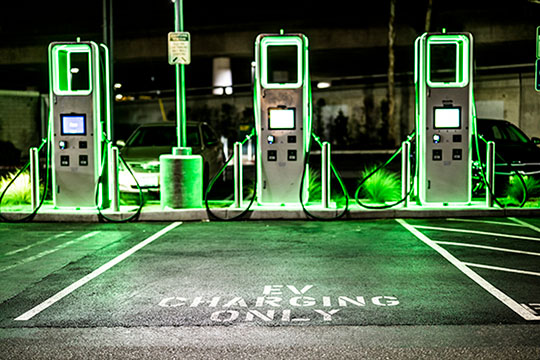
Meeting these targets could lead to between 30 and 42 million electric vehicles (EVs) on U.S. roads by 2030, but a key question remains: Where are they all going to charge? NREL's premier EVI-X modeling suite of EV charging infrastructure analysis tools can help provide answers—from the type and number of chargers needed to where they should be built.
But that barely scratches the surface of what we've been up to. Notably, NREL's Lithium-Ion Battery Resource Assessment (LIBRA) model has become the go-to tool for examining complex factors that could impact the battery materials supply chain. The lab also co-authored the federal government's first national blueprint for transportation decarbonization, a coordinated strategy to eliminate nearly all greenhouse gas emissions from the domestic transportation sector. And NREL's first-rate technical assistance and deployment expertise is ensuring communities can integrate these tools and insights into their own planning efforts through the Clean Cities Coalition Network, the Clean Energy to Communities Program, and the Joint Office of Energy and Transportation's zero-emission charging and fueling infrastructure initiatives.
Using data-driven modeling and sophisticated analysis, NREL is equipping decision makers with the scientific solutions needed to successfully navigate toward a sustainable transportation future.
Drive on,
Chris Gearhart
Director, NREL's Center for Integrated Mobility Sciences
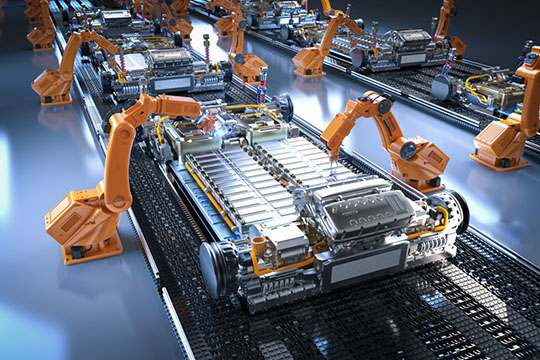
LIBRA Model Guides Development of a Sustainable Battery Supply Chain
As governments worldwide move to reduce annual carbon emissions through vehicle and grid electrification, lithium-ion batteries have emerged as the favored electrochemical energy storage solution. However, electrification efforts are complicated by various intersecting factors, including differences in markets, operations, and policies. NREL's LIBRA model is helping researchers better understand the numerous factors that impact the lithium-ion battery materials supply chain through powerful system dynamics modeling.
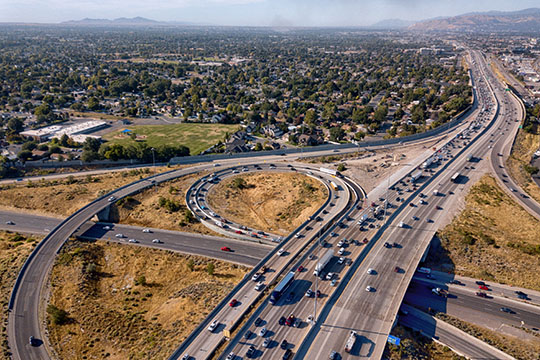
Coming Soon to a Highway Near You: Electric Charging and Hydrogen Fueling for Heavy Trucks
In support of federal clean energy goals, including decarbonizing the U.S. transportation sector by 2050, NREL researchers will help develop plans to deploy electric charging and hydrogen fueling infrastructure along some of the nation's most heavily trafficked corridors. The infrastructure will stretch across more than half of the United States and help reduce emissions from some of the heaviest emitters on the road: medium- and heavy-duty commercial vehicles.
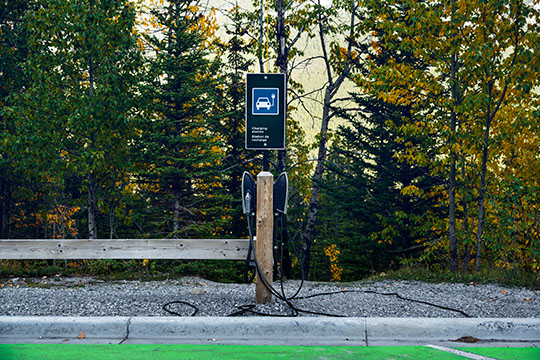
National Park Service Collaboration Creates New, Interactive Electric Vehicle Charging Map
Charging your EV at a national park just got easier. NREL researchers have collaborated with the National Park Service to create an interactive map showing EV charging stations located in, near, and en route to the nation's 400-plus national parks, monuments, and historic sites. The tool, which updates daily with new data, is designed to streamline the experience for those driving EVs to a national park.

Emerging Digital Technologies Aim To Make Travel Within Airports More Equitable, Energy Efficient, and Convenient
A recent NREL study identified promising pathways a major U.S. airport can take to build a more sustainable, equitable, and convenient transportation ecosystem for travelers and employees. One such solution involves the use of digital wayfinding technologies, which wed information systems and smartphones to efficiently guide people to and through the enormous airport—all while accessing critical goods and services as they venture to and from their gates.
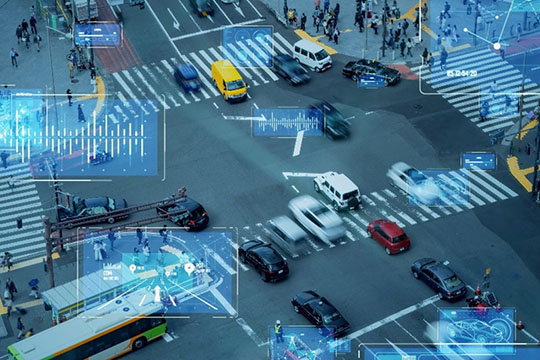
New Lab Merges Transportation and Computational Science To Improve Mobility Efficiency
NREL is establishing a new lab dedicated to researching the application of the Internet of Things on the roadside and in the built environment. The new Infrastructure Perception and Control Lab builds on the evolving role that advanced sensing and computational controls play in connected and automated movement and applies it to the coordinated movement of vehicles on the road as well as how people move and navigate in large facilities.
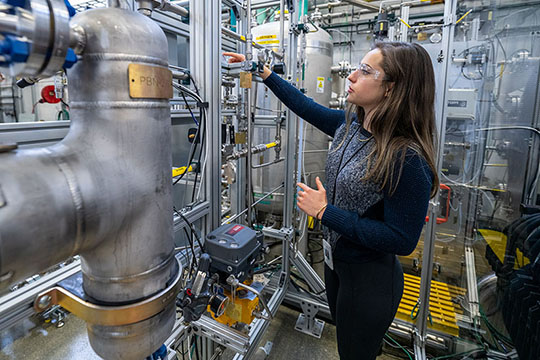
NREL Teams With Australia's Fortescue Future Industries on a Colorado Innovation Center for Clean Hydrogen R&D
Hydrogen can provide clean fuel for hard-to-decarbonize sectors such as transportation, agriculture, and industry. NREL and Fortescue Future Industries (FFI) are partnering to drive hydrogen innovation and research and bring technologies to commercial scale. The initial 3-year collaboration between NREL and FFI will include an extensive R&D program for water electrolysis to scale up manufacturing of electrolyzers that use renewable electricity to produce hydrogen from water.
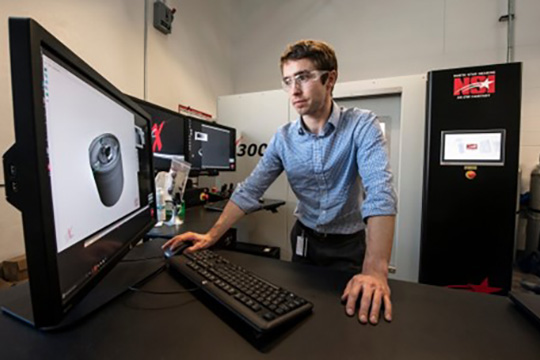
For Next-Generation Electric Vehicle Batteries, Safety Comes First
The race to create the world's next EV battery is on. But as researchers pioneer exciting new battery chemistries, thoroughly understanding their risks and limitations has never been more important. NREL has been awarded $3.4 million in federal funding to assess and de-risk novel battery technologies and then develop revised testing standards for manufacturers. The work ultimately aims to ready new batteries for widespread commercialization.

NREL Regional Analysis Can Accelerate Production and Delivery of Sustainable Aviation Fuel
NREL researchers analyzed the regional variables associated with using sustainable aviation fuel (SAF) at Chicago O'Hare International Airport. Preliminary results suggest that SAF could be a sustainable and environmentally friendly choice for the global transportation hub. The study examined regional variables, including feedstock availability, infrastructure compatibility, policies, cost of SAF production, and other important factors. The regional analysis could help airports across the country develop tailored SAF strategies.
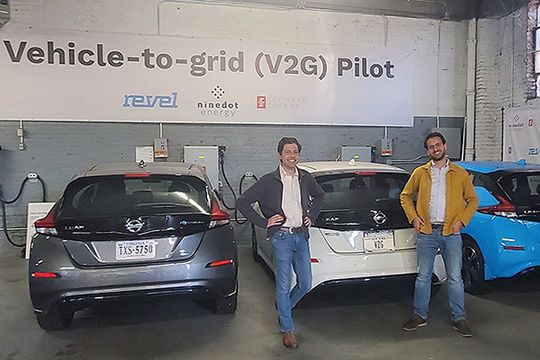
Wells Fargo Innovation Incubator Demonstration: Getting Vehicle-to-Grid Good To Go
NREL co-administers the Wells Fargo Innovation Incubator (IN2), a technology incubator for cleantech startups that has been catalyzing industry change since 2014. For its 10th cohort, IN2 formed a demonstration group in which each participant scopes and performs a demonstration of its technologies, helping these technologies gain market acceptance by providing a concrete example of success. NREL is assisting an IN2 company, NineDot Energy, in exploring a vehicle-to-grid charging system in Brooklyn, New York.
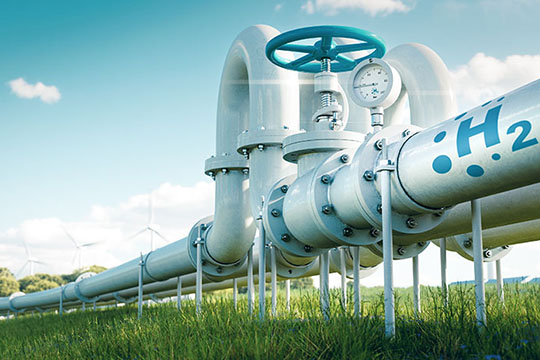
Hydrogen Blending Provides Pathway Toward U.S. Decarbonization
To reduce the emissions from natural gas services, blending hydrogen into natural gas pipelines could prove a promising, cost-effective pathway. This concept—hydrogen blending—uses existing natural gas infrastructure and can serve end users where electrification is uneconomic. A new technical report explores material, economic, and operational factors that must be considered for future hydrogen blending research. The report is part of the HyBlend™ initiative.
Get To Know Our Team: Jason Lustbader

A conversation with NREL's Jason Lustbader, manager of NREL's Advanced Vehicles and Charging Infrastructure group.
What does your research focus on?
I support a number of projects within our Advanced Vehicles and Charging Infrastructure research group. Transportation electrification is a multidisciplinary, even transdisciplinary problem, and it requires a lot of different areas of expertise.
Half of our group works on the EV charging infrastructure needed to meet vehicle electrification demands. The other half of our group is focused on commercial vehicle decarbonization. We collect data on different commercial vehicle applications, from on-road trucking to medium- and heavy-duty off-road applications like agriculture, mining, and construction equipment as well as non-road applications like rail, aviation, and maritime technologies. We apply data analytics, modeling, and simulation to understand the vehicle and electric infrastructure barriers to decarbonizing these technologies. Then we work closely with different industry, research, and government agencies to look at how we can overcome them.
What single mobility challenge would you say we need to prioritize in the next 5 years?
If I could only pick one, I would say charging infrastructure. If we're going to scale battery-electric vehicles for passenger, commercial, and non-road applications, deploying charging infrastructure in a scalable, reliable, convenient, and cost-effective way is going to be critical. There's still a lot of work that needs to be done on high-power applications, not to mention the costs and vehicle design, to realize widespread electrification.
We will also need to adapt to these changes very rapidly. We're already seeing the effects of climate change in our everyday lives. Rapid decarbonization isn't just about changing our behaviors and attitudes—the technology must evolve in a way that meets peoples' needs. But in many ways, it's exciting to see the accelerated rate of change in technology and adoption. Many people are beginning to recognize that electric and alternately fueled vehicle technologies can offer a lot of benefits. As a researcher, it's exciting to be able to contribute toward a more decarbonized transportation system and see how our efforts play out in the real world.
Must Reads
Electric Aviation Shows Promise for Rural, Small Communities
As a so-called "hard-to-electrify" sector, aviation faces electrification challenges due to concerns about range, weight capacity, and charging times. But what if we could tackle these challenges on a more local scale, using electrified aircraft to connect smaller regional or local airports? From NREL's sustainable aviation researchers, a new report examines the electrical infrastructure that would be required to serve a subset of such airports, including how to cost-effectively integrate on-site renewable energy to bring benefits both locally and nationwide.
Clean Cities: A Model of Collaborative Governance for Technology Deployment Built Over 30 Years
The Clean Cities Coalition Network has thrived for 30 years and serves as an innovative model, demonstrating how federal programs can successfully deploy new technologies through long-term, multidirectional stakeholder engagement. The network of more than 75 coalitions utilizes a framework of collaborative governance that leverages federal resources and expertise, including national labs and the U.S. Department of Energy, to implement alternative fuel and advanced transportation projects in local communities throughout the United States. A new NREL report tells the story of Clean Cities, documenting how and why the network can serve as a model for others moving their work from research to practice.
Advanced Computing Annual Report Highlights a Super(computing) Year
NREL's high-performance computing (HPC), efficient data center operation, and state-of-the-art data visualization powered over 300 clean energy projects in fiscal year (FY) 2022. More than 500 scientists and engineers—representing cross-disciplinary collaboration across a dozen funding areas, including the Vehicle Technologies Office—used NREL's HPC resources to assess and integrate data into their research. Read the FY 2022 Advanced Computing Annual Report to learn more about enhancements to the Insight Center at the Energy Systems Integration Facility, the upcoming arrival of the Kestrel supercomputer, advances in artificial intelligence, and more.
Did You Know?
Switching to electric school buses decreases or eliminates tailpipe emissions, reduces health risks for young children, and lessens overall transportation greenhouse gas emissions. NREL developed a technical assistance series to help K–12 school districts interested in implementing electric buses learn about vehicle requirements, charging infrastructure, infrastructure planning and solutions, vehicle in-use performance, training, cost factors, and more.
In the News
The Trans-American Race To Build Chargers for Electric Trucks
Wired interviews Andrew Meintz
Although it is unclear when electric trucks will rule the roads, many companies are getting a jump-start by planning for and building the charging infrastructure needed to support them now.
The Message From a U.N. Climate Report Is Dire: Humans Must Cut Pollution Quickly
NPR interviews Patricia Romero-Lankao
We have never been better prepared to curb climate change. There are many cost-effective, affordable, and available solutions to reduce emissions in transport, industry, housing, and daily activities. The key to success depends on humanity starting to cut emissions now.
How Electrification Became a Major Tool for Fighting Climate Change
The New York Times interviews Matteo Muratori
To meet the country's 2050 goal of cutting emissions to nearly zero, all kinds of clean energy options are in play. Electricity is currently the most viable option, improving efficiency while decreasing waste and pollution in transportation and buildings, and potentially even industrial processes.
Is Hydrogen the Clean Fuel of the Future?
NBC News interviews Keith Wipke
Although not yet scalable, renewable hydrogen research is expanding. It could play a key role in decarbonizing light- and heavy-duty vehicles, including planes, ships, ferries, and large trucks.
Share

